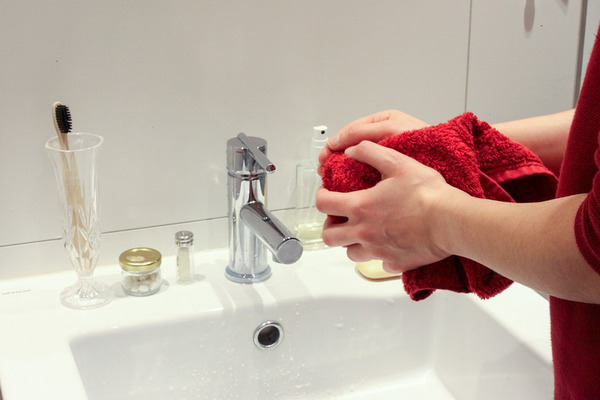

7 Home Remedies to Treat and Prevent Mild Folliculitis

Folliculitis is a very common skin condition characterized by inflamed and infected hair follicles. The hair on the skin grows from tiny openings or pockets called follicles and when they become affected by a fungal or bacterial infection it is called folliculitis. It starts as mild irritation and inflammation on the affected area of the skin. The affected region may also experience mild burning sensation, flakiness, tenderness. Even though folliculitis is not contagious it may spread to other areas of your body. Most cases of folliculitis are mild and go away within a few days that can be treated with home remedies. Folliculitis can be caused by razor bumps, a lot of sun exposure, unhygienic bathtubs, yeast infection, etc. If symptoms persist it is wise to consult a physician. Read on to find out some easy home remedies for mild folliculitis.
1. Warm Compress
This will help soothe the swelling, irritation, and pain. Boil a soft cotton cloth or face towel to sterilize it. Now boil some water and add salt to it, soak the cloth in this water. Take the compress cloth out and wring it and gently press it on the affected skin area. Repeat this at least twice or thrice a day, each time using a fresh cloth or sterilizing the previous one.
2. Clean Affected Skin
The affected area must be cleaned daily with an antibacterial soap. Always remember to use warm water and to dry the area by gently patting it with a soft towel. Use a clean towel or washcloth every time and do not share it with anyone. Remember to clean the affected area at least twice or thrice a day. Any cloth that comes in contact with the affected area must be cleaned with warm water and detergent.
3. Soothing Gels and Packs
There are many household ingredients you can apply to the affected skin for amazing results. - Aloe vera is a wonder plant, the gel from it may help the skin heal faster and also provide a soothing sensation. Clean the affected area with soap and water before applying pure aloe vera gel onto the affected area. The gel used must not contain any additives or perfumes. - Apple Cider Vinegar known as an antimicrobial agent can also be used to manage the problem. Mix 1 tablespoon of ACV with ½ a cup of water. Dip cotton balls in the mixture and apply onto the affected areas for twenty mins, repeat twice a day. - Turmeric is globally renowned for its antimicrobial, anti-inflammatory and antioxidant properties. You can take turmeric supplements or apply it as a paste. Mix ½ a teaspoon of turmeric powder with a bit of coconut oil or water and apply it on the affected area. You can choose to bandage the area and keep it overnight.
4. Essential Oils
Tea tree oil, neem oil, geranium oil, grapefruit seed oil are very effective in treating folliculitis. Tea tree oil can be added to your shampoo, lotion or body wash. Rub it gently onto the affected area and let it sit. Before using it do a patch test to make sure there are no adverse reactions. Tea tree oil is especially effective for people with recurring folliculitis. Tea Tree Oil can be mixed with geranium oil and grapefruit seed oil. Neem oil is a powerful antiseptic, antifungal agent, it also prevents the formation of scars and is very effective for skin and scalp infection. Mix some neem oil with coconut oil or almond oil. Massage gently onto affected areas. Leave it overnight for effective results. Neem oil can also be applied directly onto the affected area but just to make sure there are no adverse effects, do a small patch test first.
5. OTC medicine Over
The Counter Medication can be in the form of soothing gels or creams, topical antibiotics, and antifungals. Anti-itching lotion is very useful to keep you from constantly scratching the affected area and worsening it. Anti-itching lotions and creams usually contain hydrocortisone (a steroid) which helps to reduce inflammation and redness. However, be careful to not use this on immunocompromised patients. Apply the lotion or cream directly over the affected area in a thin layer. Mild bacterial folliculitis can be cured with clindamycin or metronidazole lotion. Antifungal medication is ketoconazole. Note that if your folliculitis persists for a long time it is time to see a doctor who will prescribe adequate antibiotics for fifteen to thirty days followed by observation.
6. Avoid Shaving or Waxing
Do not shave or wax over the affected region, it may cause permanent scarring while making the area bleed and spread infection. The affected area will take a lot longer to heal if it encounters any friction. Even while applying medication make sure to do it with cotton swabs to maintain minimal skin to skin contact.
7. Protect the Affected Area
Protection is mandatory to make sure the condition does not increase in severity or area. If the follicular region is somewhere on your body that comes in contact with clothes make sure to wear loose clothes to keep the area breathing and avoid friction. After a workout, immediately remove your sweaty clothes to keep the skin dry. Avoid using public pools or baths to prevent infecting yourself further. Use natural skincare products and make sure your skin is clean and dry at all times.

















